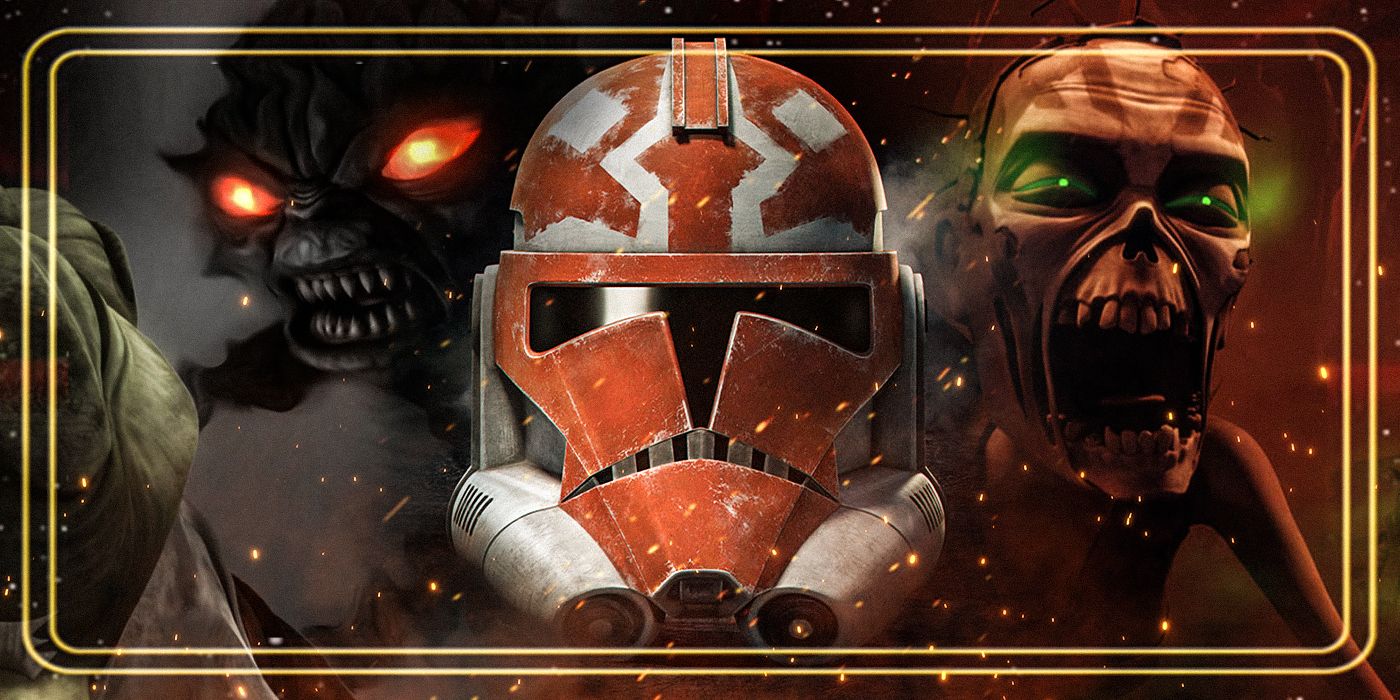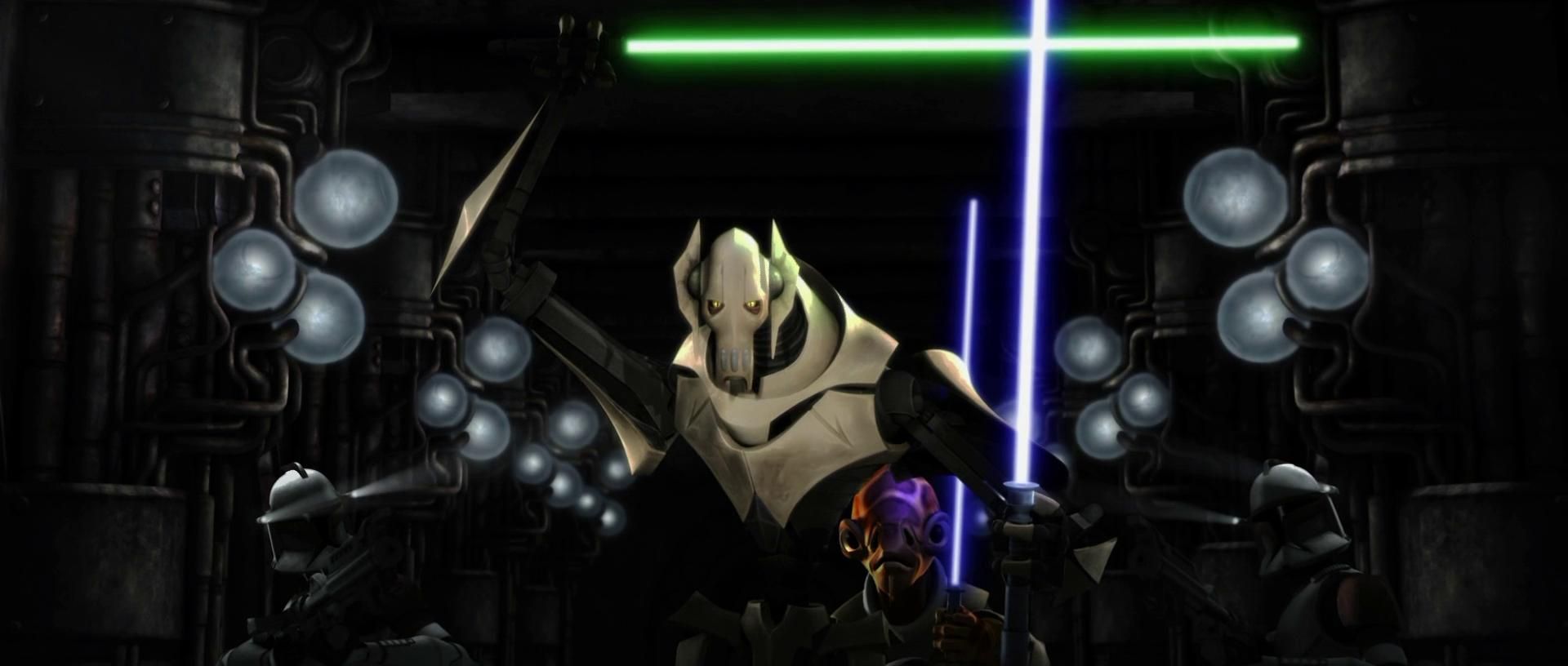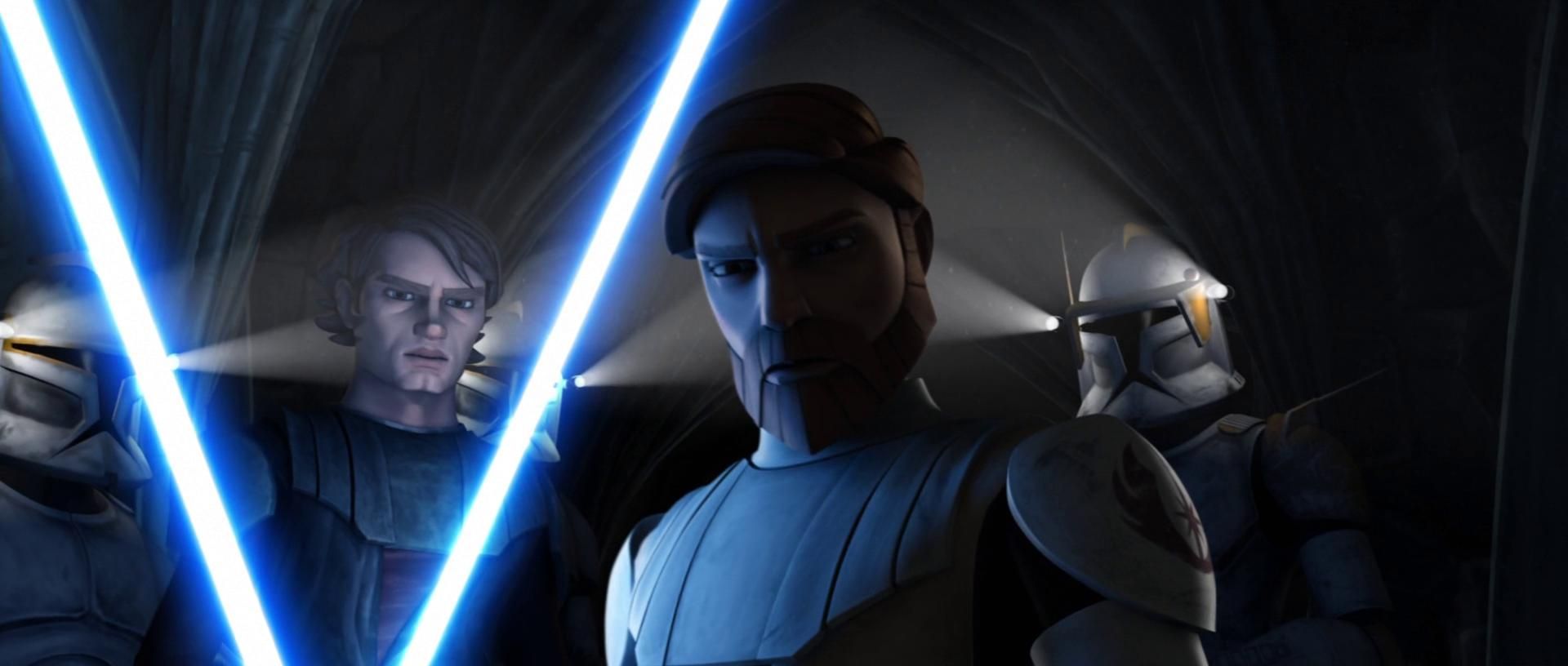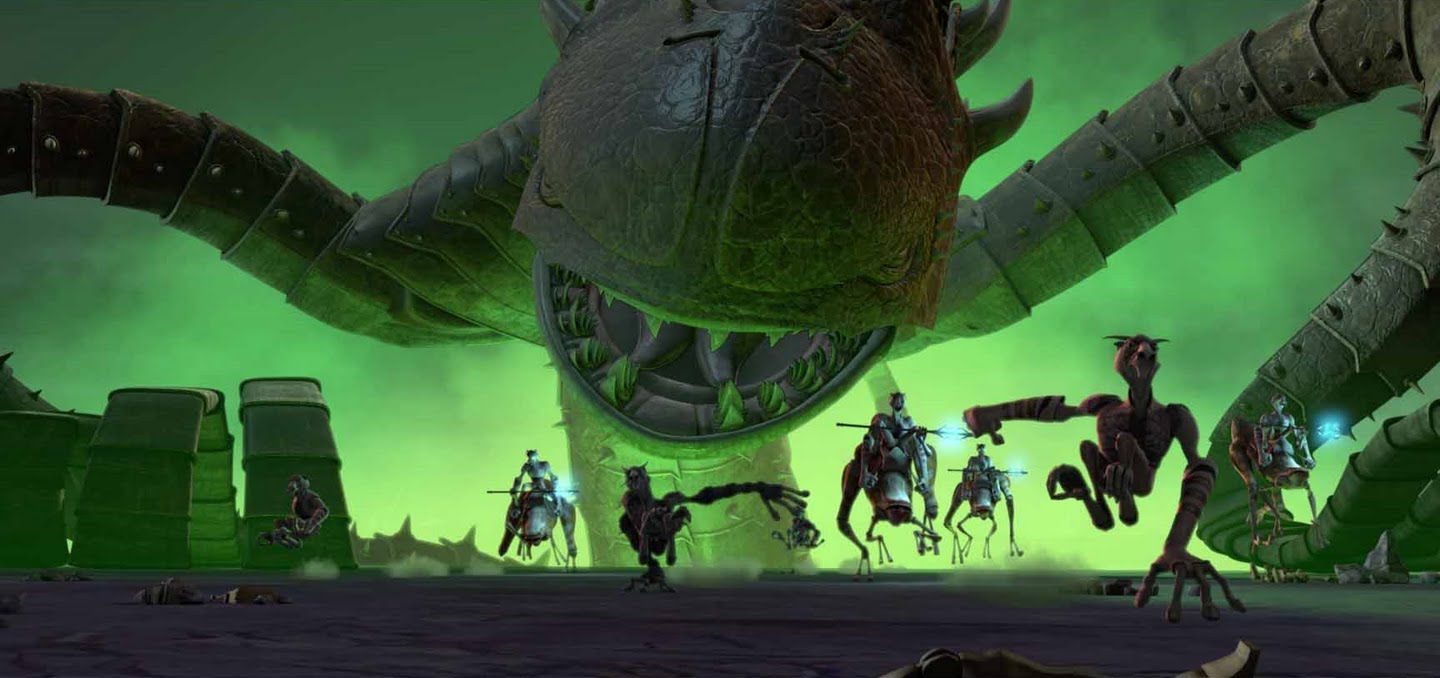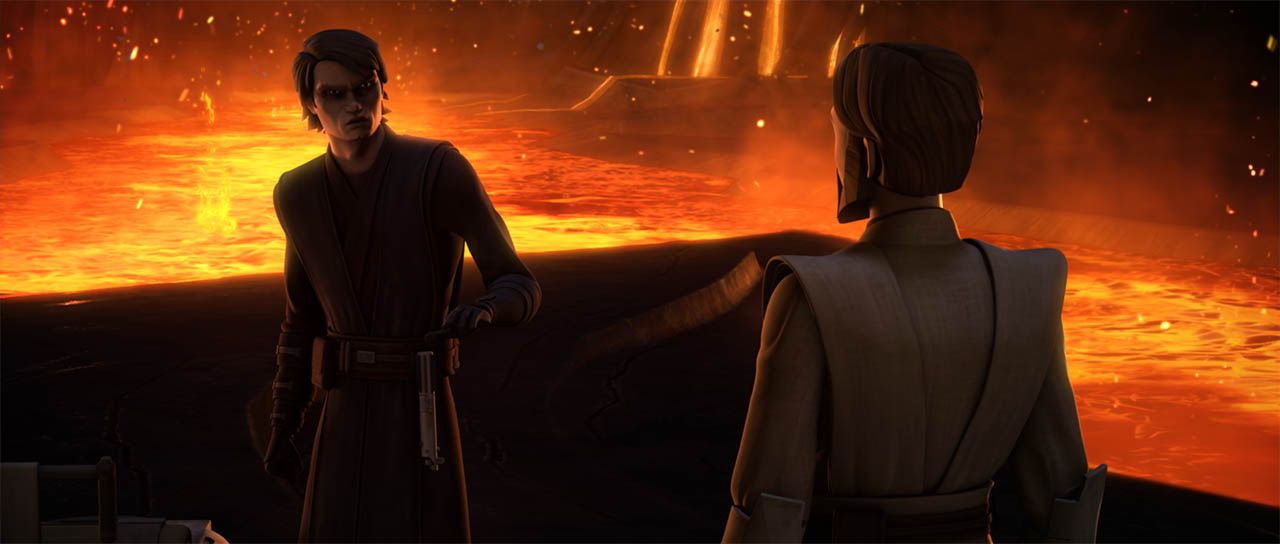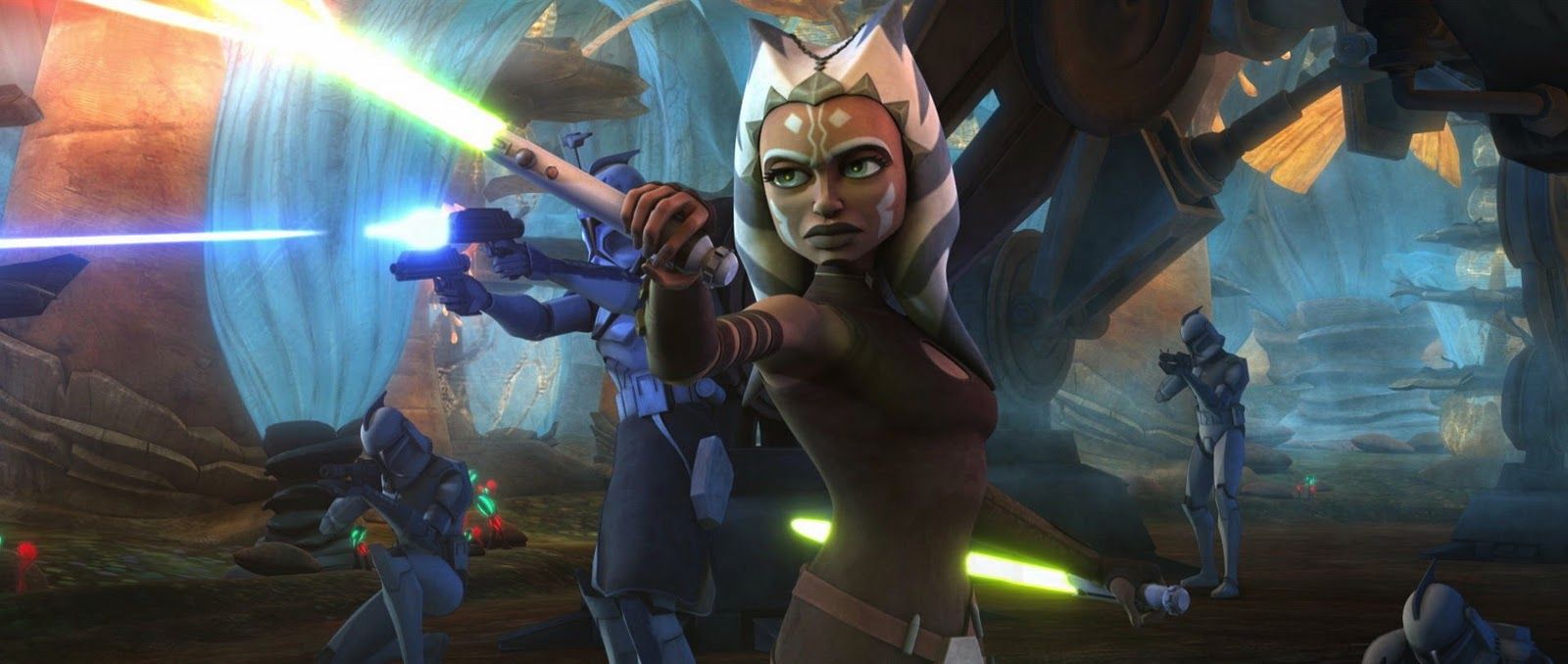Before there was a new Star Wars television project announced nearly every week, Dave Filoni’s groundbreaking animated series Star Wars: The Clone Wars expanded the galaxy far, far away during a time when the concept of a “sequel trilogy” seemed like a distant dream. Although the series got a rocky start thanks to the botched 2008 theatrical film of the same name, the show developed the characters of Ashoka Tano (Ashley Eckstein) and Clone Captain Rex (Dee Bradley Baker) into beloved favorites.
The Clone Wars succeeded in showing the gradual descent of Anakin Skywalker (Matt Lanter) where George Lucas had failed with the prequel films, exploring the mythic “Clone Wars” that Obi-Wan Kenobi hinted at in the 1977 original. Although the series was mostly focused on Anakin’s training of Ashoka, the anthology nature allowed for many offshoot episodes that explored different classic cinema influences on the franchise.
The Clone Wars often featured callbacks to classic horror films, and Star Wars fans may want to revisit these spooky episodes amidst their Halloween binge.
"Lair of Grievous" (Season 1, Episode 10)
The Seperatist droid leader General Grievous (Matthew Wood) had a strange introduction in Revenge of the Sith, but The Clone Wars developed his character further. Grievous was as close to a classic Universal monster that the Star Wars universe had, as he’s tormented by his metallic state. Grievous wanted nothing more than to best the Jedi in combat and take their lightsabers as trophies, but he’s frequently dismembered and lacks force abilities.
The first season episode “Lair of Grievous” spotlights the character in what's essentially a haunted house story. Jedi Master Kit Fisto (Phil LaMarr) and his recently promoted padawan Nahdar Vebb (Tom Kenny) search for the Seperatist leader Nute Gunray, but become trapped in Grievous's personal mansion where he torments them with trap doors, monstrous pets, and chaotic explosive devices. Helmed by Japanese animator Atusushi Tekeuchi, the episode leans into the influence of anime with the depiction of Grievous's distorted mechanical body horror.
"Legacy of Terror" and "Brain Invaders" (Season 2, Episodes 7 and 8)
After a first season that was mixed in quality, The Clone Wars launched a most ambitious storyline in season two with a five-part storyline that reintroduced the planet Geonosis from Attack of the Clones. The arc detailed the multifaceted invasion as the Jedi attempted to root out the Geonosian race that developed the battle droid technology. The last two installments in the arc introduced zombies to the franchise; Obi-Wan and Anakin discover that the Geonosians were able to retake the planet initially by resurrecting their undead population in tribute to their queen.
“Legacy of Terror” follows the Jedi as they explore a series of underground catacombs where they’re preyed upon by the zombies, in what feels like an homage to the cave sequences in The Descent and Day of the Dead. The body count is high, as clone troopers are routinely picked off by the zombie creatures. The arc’s concluding chapter “Brain Invaders” tracks the further outbreak of the Geonosian virus when it infects a Republic medical convoy assigned to the padawans Ashoka and Barriss Offee, slowly taking over the minds of the clones. The threat of the pandemic spreading to the entire Republic fleet is evident by the end, but initially, the troopers are subtly replaced, Invasion of the Body Snatchers style.
"The Zillo Beast" and "The Zillo Beast Strikes Back" (Season 2, Episodes 18 and 19)
The Zillo Beast is Star Wars’s Godzilla, a literal alien Kaiju that’s discovered on the planet Malastare. The two-part story arc is more or less a straight adaptation of the original 1954 Gojira, as the creature is discovered after being awakened by the Republic after they’re forced to utilize an experimental electro-proton weapon to devastate the planet’s surface. In classic Godzilla fashion, the series' greedy Galactic Senate decides to transport the creature to the capital planet Coruscant, where it eventually breaks out and wreaks havoc.
The Jedi deal with the same moral quandaries that are present throughout the Godzilla franchise. Mace Windu voices the concern that killing the creature is against the Jedi Code, as the innocent creature was only provoked by a conflict it has no stake in. The destruction wreaked upon Coruscant is a terrific tribute to the Kaiju series, and the second episode “The Zillo Beast Strikes Back” retains the 1954 film’s tragic ending. There’s a terrific teaser at the end in which Chancellor Palpatine announced his intention to clone the beast; it's a great foreshadowing to the superweapon technology of his Imperial regime and a nod to humanity’s continuous meddling throughout the Godzilla series.
“Ghosts of Mortis" (Season 3, Episode 17)
The “Mortis” trilogy within The Clone Wars’s third season took the series back to its spiritual roots when Obi-Wan, Anakin, and Ashoka are mysteriously awoken on an enigmatic world that synergizes force powers through metaphorical imagery, in a similar vein to the iconic Dagobah cave sequence in The Empire Strikes Back. The different archetypes of the force are represented by literal embodiments, including the dark side being The Son (Sam Witwer), light side protector The Daughter (Adrienne Wilkinson), and The Father (Lloyd Sher) as the keeper of the balance.
The final episode in the "Mortis" story arc explores supernatural, metaphorical Lynchian dread as Anakin is haunted by visions of his descent into darkness. In a traumatizing, visceral dream sequence lifted from Twin Peaks’s Red Room, Anakin is simultaneously haunted by memories and premonitions at a rapid-fire rate. The entire story arc is experimental and unconnected from the war effort itself, and its haunting final chapter teases Anakin’s chilling future through a shadowy image of Darth Vader’s mask.
"Padawan Lost" (Season 3, Episode 21)
Ashoka faced one of her greatest challenges to date in the concluding arc of the show’s third season, in which she’s captured by the vicious Trandoshan bounty hunters and detained on their planet Wasskah. The second half of the two-part conclusion “Wookie Hunt” took a more crowd pleasing direction with the appearance of Chewbacca, but its predecessor “Padawan Lost” boasted a more gruesome depiction of guerilla combat. The Trandoshans set Ashoka and a band of fellow prisoners loose in a jungle setting, where they’re hunted down for sport.
The Predator parallels are strong, as Ashoka is forced to adopt primal combat techniques in order to survive. Ashoka’s fellow inmates are picked off one-by-one, and the Trandoshans grow more animalistic in their pursuits when the Jedi padawan proves to be elusive. The unflinching ruthlessness was unique within the series, capturing a similar claustrophobic jungle atmosphere to John McTiernan’s classic.

